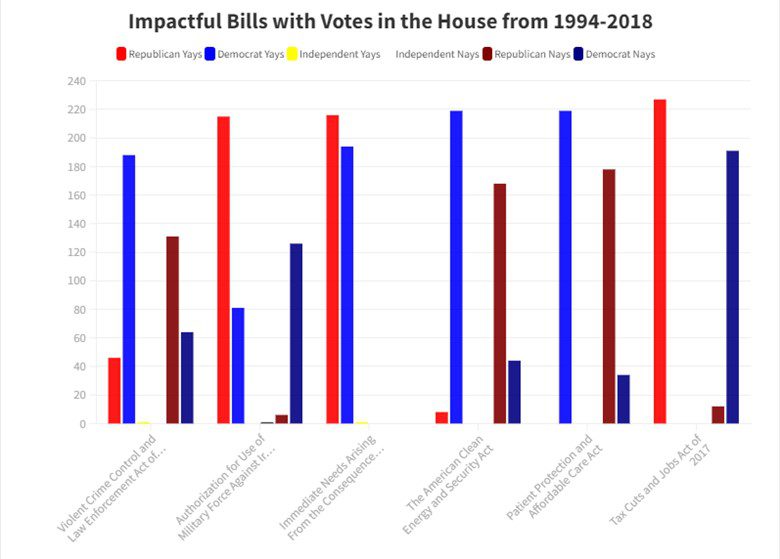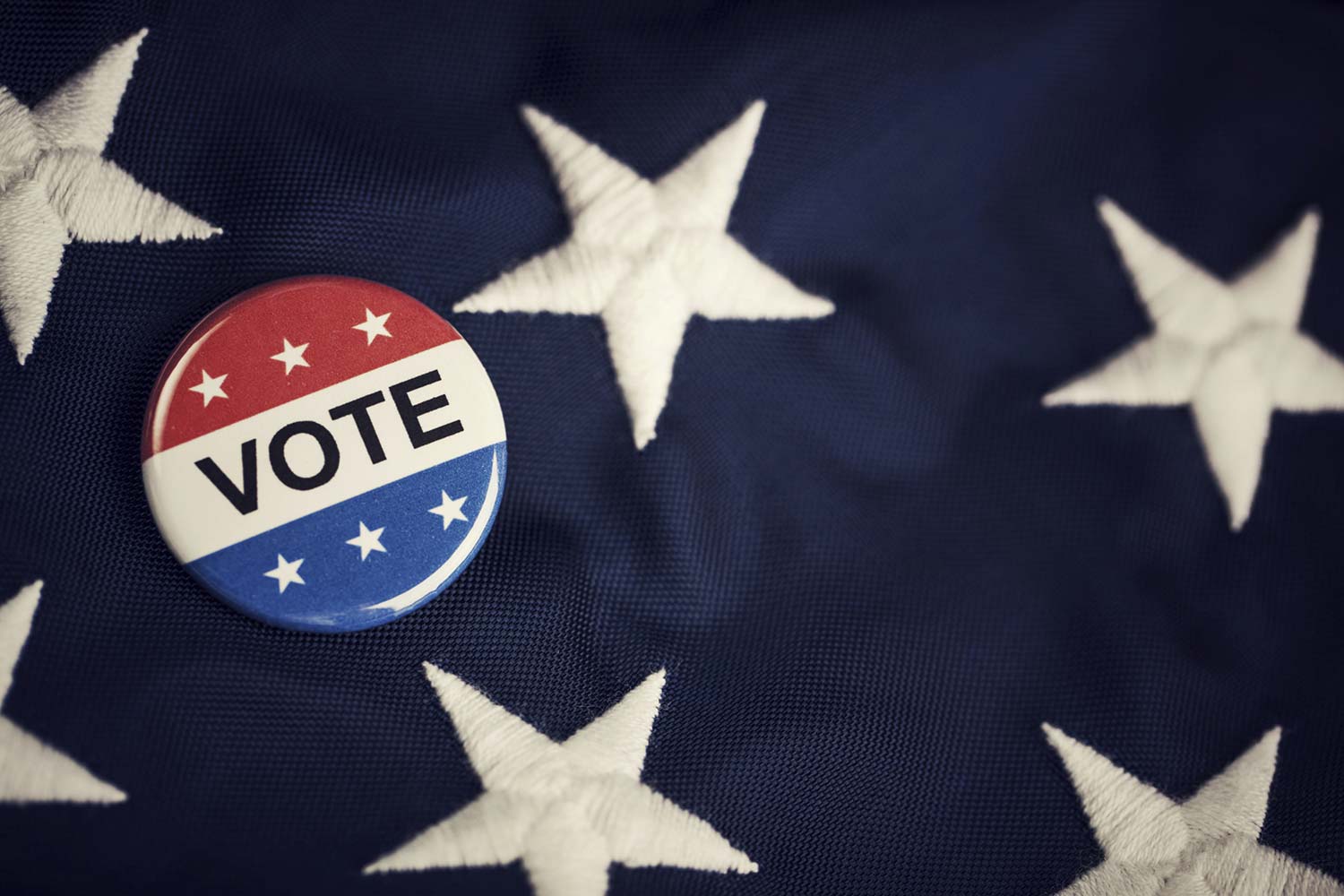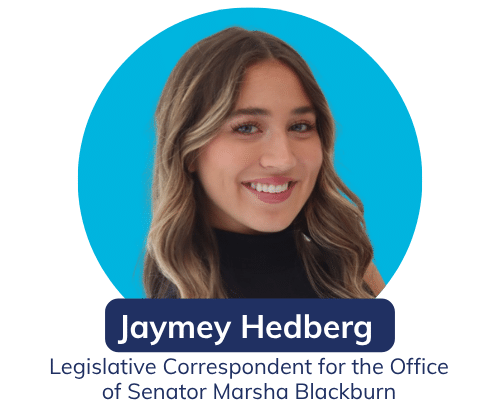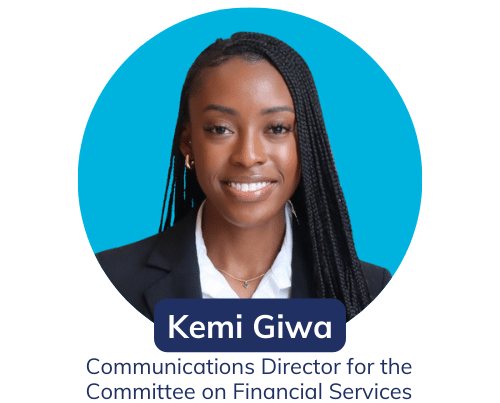People typically vote by how they’re doing, not by state of the union. Humans are constantly reacting intuitively to everything they perceive. Social psychologist Johnathan Haidt drives this idea home in his book, The Righteous Mind: Why Good People Are Divided by Politics and Religion, when he explains that our brains evaluate everything in terms of potential threat or benefit to the self and then adjust behavior to get more of the good stuff and less of the bad. If things are going well for them, they will keep the incumbent in office. If sentiment is down, things often change; it could be the House, Senate, Presidency, or all of the above. Whether it is crime, health care, taxes, inflation (regardless of macroeconomic factors) or national security issues, these issues impact the lives and wallets of voters and can swing who is in control of Congress.
While the polls often cite a singular issue why flips occur, there is often a series of major laws or attempted legislation that create a cause-and-effect result.

In the last 50 years, there have been four times where the majority party suddenly changed in the House of Representatives. Democrats lost 54 seats in 1994, gained 32 seats to take back the majority in 2006, lost 64 seats in 2010, and finally gained 41 seats in 2018 to hold the majority that exists today. Behind each of these majority-party flips was something that drove voters to the polls, a change of lifestyle that elected officials implemented.
Former Speaker of the House John Boehner stated in his book, On the House, that when legislation is pushed through at fast speeds, it can lead to a chamber flip, referencing his personal experience:
Between January 2009 and the November 2010 midterm elections, she [Nancy Pelosi] worked hand and glove with President Obama to pass two major pieces of legislation. The Affordable Care Act or Obamacare and the American Clean Energy and Security Act, or as we called it, Cap and Trade. The House Democrat Party had to be fully behind these bills; Speaker Pelosi would tolerate no dissensions in her ranks. I saw pro-life Democrat Bart Stupak of Michigan hold his nose and vote for Obamacare because he was promised changes that never came. He decided to step down in 2010. I saw pro-coal Democrat Rick Boucher, who represented a coal-producing district in southwestern Virginia, vote for Cap and Trade.
Former Speaker of the House John Boehner stated in his book, On the House, that when legislation is pushed through at fast speeds, it can lead to a chamber flip, referencing his personal experience. While in office, Boehner saw the majority party flip three times, and was Speaker of the House after the flip in 2010. Boehner said in his book that between January 2009 and November 2010, two massive pieces of legislation impacted millions of people: The Patient Protection and Affordable Care Act in March 2010 (ACA) and The American Clean Energy and Security Act. The ACA allowed a significant expansion of Medicaid, more options for affordable health care, and support for medical care delivery methods to lower the costs of healthcare overall. This law was seen as unconstitutional and an unethical challenge from the beginning. While the passing of ACA allowed millions of people to have access to health care, it drove up the costs for users and small business health providers. When the impact of the ACA hit the people’s wallets, they went to the polls ready for change leading to republicans gaining 64 seats in the House in the 2010 election — the most significant shift in party seats since 1948.
Are we experiencing Déjà Vu?



We are starting to detect a theme here. When Republicans had all three offices in their control from 2016 to 2018, they were working on strengthening border security along the U.S.-Mexico border and attempting to repeal and replace the ACA. The Republicans’ efforts to focus on healthcare ended up hurting them, as a Gallup poll that was taken days before the election showed that around three-fourths of voters’ top issues were health care and the economy. Additionally, the divisive confirmation hearings of Supreme Court Justice Brett Kavanaugh drove people to vote — as 81% of Democrats, and 72% of Republicans stated Supreme Court appointments were a critical issue for voters. The Tax Cuts and Jobs Act passed in 2017 helped rally people against the majority. As moderates retired, and the middle class owed money for the first time in a long time the door opened for Democrats take control of the House of Representatives after a net gain of 41 seats.
Fun Fact: This midterm election led to the highest turnout in four decades at 53%.







